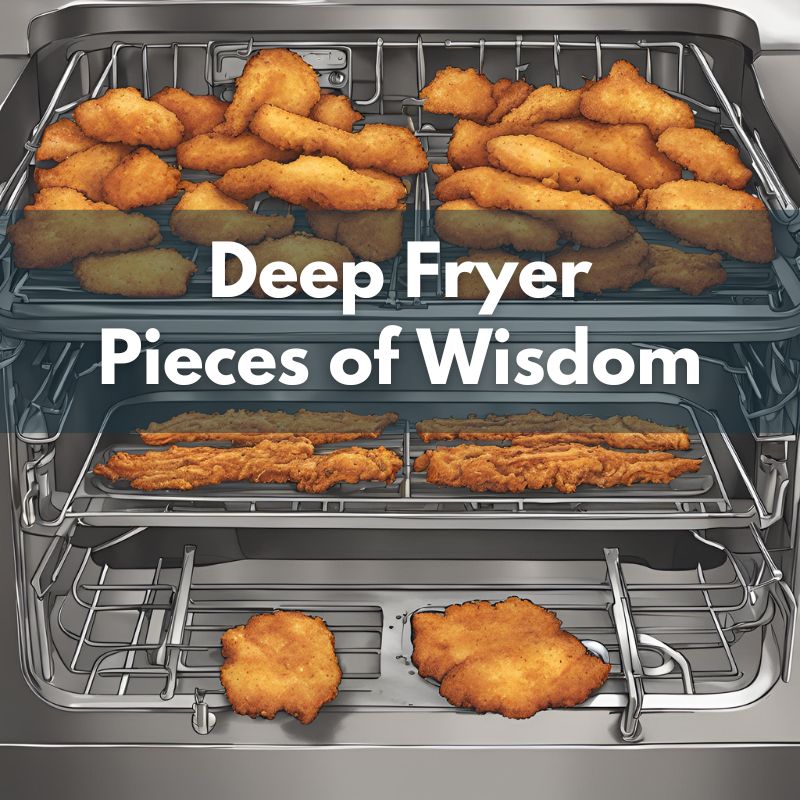
Deep frying is a beloved cooking technique that has been around for centuries, delivering crispy, golden delights that tantalize the taste buds. From fried chicken to doughnuts, deep-fried foods have a special place in culinary culture worldwide. However, mastering the art of deep frying requires more than just tossing food into hot oil. It involves a blend of science, technique, and wisdom. In this post, we will explore some essential deep fryer pieces of wisdom that will elevate your frying game to a professional level.
1. Choose the Right Oil
One of the most crucial elements of deep frying is selecting the right oil. Not all oils are created equal, especially when it comes to high-temperature cooking. The best oils for deep frying are those with a high smoke point—meaning they can withstand the heat without breaking down or producing harmful compounds. Some top choices include:
- Peanut Oil: A favorite for deep frying due to its high smoke point (around 450°F/232°C) and neutral flavor.
- Canola Oil: Another popular option with a smoke point of approximately 400°F/204°C. It’s affordable and has a mild taste.
- Sunflower Oil: With a smoke point of 440°F/227°C, this oil is a great alternative for those who prefer a light, unobtrusive flavor.
2. Monitor the Temperature
Temperature control is vital in deep frying. Too low, and your food will absorb excess oil, becoming greasy and heavy. Too high, and the exterior will burn before the interior is fully cooked. The ideal temperature for deep frying usually ranges between 350°F (175°C) and 375°F (190°C). Use a thermometer to keep an eye on the oil’s temperature, and adjust the heat as necessary to maintain consistency.
3. Don’t Overcrowd the Fryer
It might be tempting to fry a large batch of food all at once, but overcrowding the fryer can lead to uneven cooking. When too much food is added at once, the oil’s temperature drops significantly, resulting in soggy, undercooked food. Fry in small batches to ensure each piece cooks evenly and crisps up perfectly.
4. Prep Your Food Properly
Proper food preparation is key to achieving that golden, crispy exterior. Here are some tips:
- Pat Dry: Ensure that the food is dry before frying. Moisture causes oil splatters and can make the coating soggy.
- Breading and Batter: Use a light coat of flour, cornstarch, or breadcrumbs to give your food an extra-crispy texture. When making a batter, ensure it’s not too thick; a thin, even coating works best.
5. Use the Right Tools
Having the right tools can make deep frying safer and more efficient:
- Deep Fryer or Heavy Pot: A deep fryer is ideal, but if you don’t have one, a heavy pot like a Dutch oven will do. Ensure it’s deep enough to prevent oil from spilling over.
- Slotted Spoon or Spider Strainer: These tools are perfect for lifting food out of the oil without bringing excess oil along with it.
- Thermometer: As mentioned earlier, a good thermometer is essential for maintaining the correct oil temperature.
6. Drain and Season Immediately
Once your food is fried to perfection, drain it on a wire rack or paper towels to remove excess oil. It’s best to season the food immediately while it’s still hot, as this allows the seasoning to adhere better, enhancing the flavor.
7. Know When to Replace Your Oil
Reusing oil is common in deep frying, but it’s essential to know when the oil is no longer good. If the oil becomes dark, starts smoking at lower temperatures, or develops an off-putting smell, it’s time to replace it. Used oil should be strained and stored in a cool, dark place to prolong its life.
Conclusion
Deep frying is an art that, when done correctly, yields some of the most delicious and satisfying foods imaginable. By following these deep fryer pieces of wisdom—choosing the right oil, monitoring temperature, avoiding overcrowding, prepping your food properly, using the right tools, draining and seasoning immediately, and knowing when to replace your oil—you can master this cooking technique and enjoy perfect, crispy results every time.
For more cooking tips, recipes, and culinary insights, visit our homepage at News Gutter.
